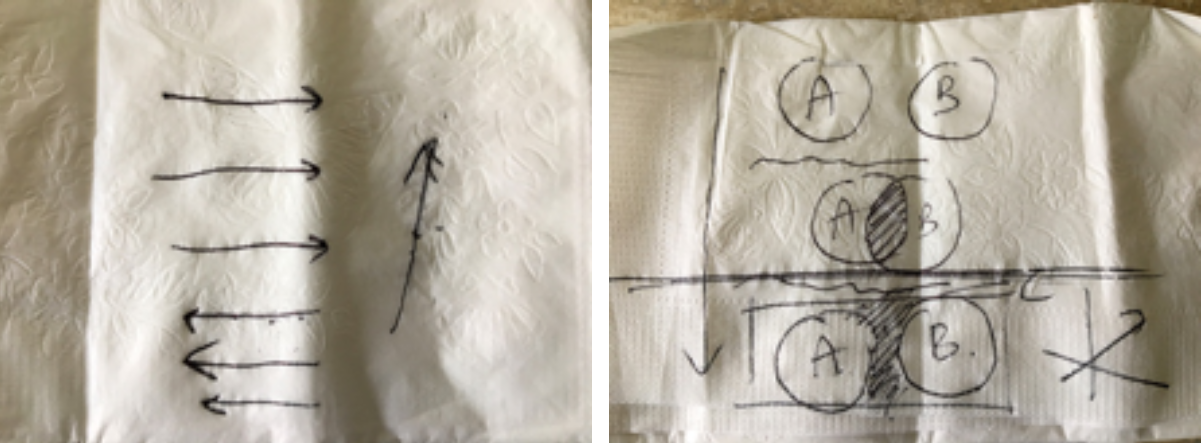 The Dieter Kienast project. I believe that a sound site strategy is responsible for ninety percent of the success of any architectural project. Of course, beyond the initial principle of settlement, keeping an eye on how the project unfolds through multiple design phases —urban, architectural and human scales— and making constant adjustments to the site strategy is an important barometer of the health of the project.
The Dieter Kienast project. I believe that a sound site strategy is responsible for ninety percent of the success of any architectural project. Of course, beyond the initial principle of settlement, keeping an eye on how the project unfolds through multiple design phases —urban, architectural and human scales— and making constant adjustments to the site strategy is an important barometer of the health of the project.
Category Archives: Architectural Education
Why a blog and why now?
 I am often reminded of the experience of eating, and choosing the day’s specials, at restaurants around the world (Michelin starred or not). The inventiveness, the perfectly cooked subtle and innovative flavors, and the beautifully presented dishes are part of showing off the chef’s skill.
I am often reminded of the experience of eating, and choosing the day’s specials, at restaurants around the world (Michelin starred or not). The inventiveness, the perfectly cooked subtle and innovative flavors, and the beautifully presented dishes are part of showing off the chef’s skill.
Sketching -an iterative process, Part 2

About sketching -an iterative process, Part 2. I believe that for any design process to be successful, there is a need for iterative sketching to accompany the production and testing of architectural ideas. To be able to compare and contrast between sketches is critical and allows decisions to be measured on the strength and legitimacy of one’s conceptual ideas.
Continue reading Sketching -an iterative process, Part 2Design versus project

Design versus project. There is much to say about how curricula are developed and their importance in defining the content of any rigorous academic program; in our case an architectural education. Traditionally, classes within the discipline of architecture are taught according to required and elective professional courses, while additional opportunities provide students with a personalized liberal-arts education.
Thoughts on architectural education, Part 1

Thoughts on architectural education, Part 1. While studying architecture in Switzerland, I remember struggling with the many competing and conflicting voices regarding what architecture meant, and most importantly, what my future role as an architect might hold.
Continue reading Thoughts on architectural education, Part 1Study sketch to drafted sketch

Study sketch to drafted sketch. Sketching might be for some a natural gift, but for most of us it is about the patient—and often painful—practice of setting one’s pencil on a white sheet of paper and letting ideas leave their mark.
Continue reading Study sketch to drafted sketchThe meaning to draw to scale

The meaning to draw to scale. While learning about architecture, I remember needing to overcome many stumbling blocks, in particular those surrounding fundamental questions about what makes good design. Included in this larger inquiry was the ability to think spatially, the confidence to translate ideas into space, and how to sketch in an iterative manner.
Continue reading The meaning to draw to scaleArchitecture: principle of settlement

Architecture: principle of settlement. I believe that for architecture to exist within a landscape, it should be site specific. This desire for permanence has always given architecture a raison d’être to belong to a site, a place, or more importantly, a context.
Continue reading Architecture: principle of settlementLa Petite Maison by Le Corbusier

La Petite Maison by Le Corbusier. We all know that for a project to be successful, one needs to have a strong concept as well as the talent to implement the complex process of getting it built. Yes, I selfishly assume that most architecture should be built, while acknowledging that I see our environment continue to be populated by less-than mediocre buildings designed by both architects and non-architects.
Continue reading La Petite Maison by Le CorbusierArchitecture thesis, Part 1

Architecture thesis, Part 1. Most United States undergraduate architecture students will engage in a thesis project that spans the entirety of the last semester or academic year. After learning about the foundations of their discipline between their 1st and 2nd years, followed by the consolidation of ideas that takes place in their 3rd and 4th years, students are asked in their last year to demonstrate a sense of independence, generally through a more robust project called a thesis project.
Continue reading Architecture thesis, Part 1